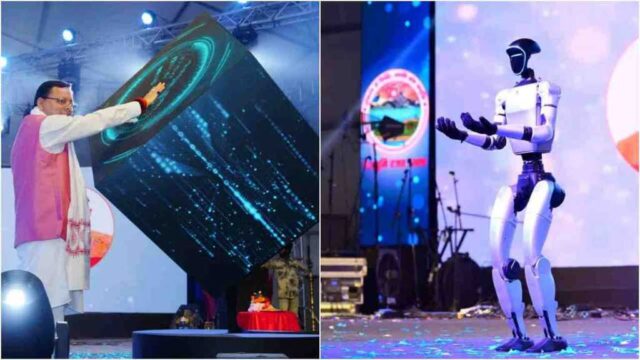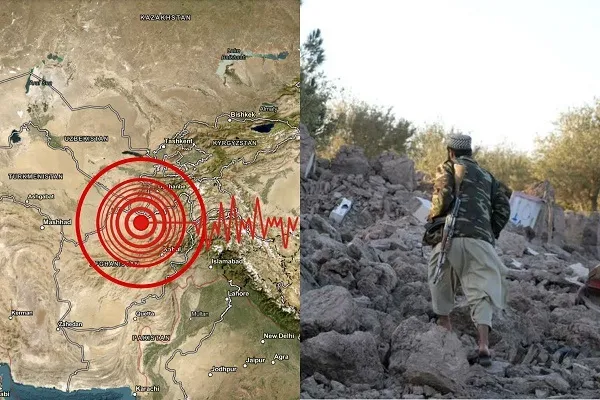NASA’s spacecraft will collide with Asteroid at a speed of 24 thousand km per hour, this will be the result

The Double Asteroid Redirection Test (DART) spacecraft of the US space agency NASA will hit an asteroid on September 26 at a speed of 24,000 kilometers per hour. Dart was launched from Earth in November 2021. It is like the shape of a bus. It was built to test and prove our ability to defend Earth from a dangerous asteroid.
Asteroid close to earth
It is not easy to hit a target directly from 11 million kilometers away. The asteroid was actually chosen by NASA because it is relatively close to Earth. This would give engineers an opportunity to test the spacecraft’s ability to operate itself in the final stages before impact, as it would crash autonomously.
What is dimorphos?
The target asteroid is called Dimorphos. It is a 163 m diameter body orbiting a 780 m wide asteroid named Didymos. The ‘binary asteroid system’ was chosen because Dimorphos is in orbit around Didymos, making it easier to measure the result of an impact due to the consequent change in its orbit. However, there is currently no risk to Earth from the dimorphos system.
Important is deflection
The technique being used is called ‘Kinetic Impact’, which would crash into the asteroid’s orbit and alter its orbit. A small deflection may be enough to prove that this technique can indeed change the path of an asteroid on a collision course with Earth.
The effect will be equal to three tons of TNT
The Dart spacecraft is about to be completely wrecked by the collision as its impact would be equivalent to about three tons of TNT. In comparison, the atomic bomb dropped on Hiroshima was equivalent to 15,000 tons of TNT.
What is CubeSat?
Fortunately, the Dart spacecraft isn’t traveling alone on its quest, it’s carrying LICIACube, a shoe-sized mini spacecraft known as a CubeSat, built by the Italian Space Agency and aerospace engineering company Argotec. has been developed by. It recently separated from the Dart spacecraft and is now traveling on its own to witness the impact at a safe distance of 55 km.
A CubeSat has never operated around asteroids before, so it offers new potential ways of exploring space in the future. This effect will also be seen from Earth through telescope. These methods will help scientists confirm whether the operation was successful or not. However, it may take weeks for LICIACube to send all the images back to Earth.
What will happen next?
The investigation team will investigate the situation after the accident. These scientists will aim to measure the changes in the motion of Dimorphos around Didymos by observing its orbital period. This is the time during which Dimorphos passes in front and behind Didymos, which will happen every 12 hours.
The ground telescope will aim to capture images of the eclipse of Dimorphos. To cause a significant enough deflection, Dart would have to undergo a change in orbital period of at least 73-seconds after impact. These measurements will ultimately determine how effective the ‘kinetic impact’ technique is in removing a potentially dangerous asteroid.
The great uncertainty about how strong the dimorphosis is has made designing a bullet spacecraft a really great engineering challenge. Based on ground observations, the Didymos system is suspected to be a pile of rubble composed of several different rocks, but its internal structure is unknown. There are also large uncertainties about the outcome of the impact.
Future missions
The exploration of the asteroid system won’t end with Dart. The European Space Agency is set to launch the HERA mission in 2024. By observing the distortions caused by the Dart impact on Dimorphos, the HERA spacecraft will gain a better understanding of its structure and formation. Knowledge of the intrinsic properties of objects such as Didymos and Dimorphos will help us better understand the danger that could occur to Earth in the event of an impact.
Ultimately, the lessons from this mission will help verify the mechanics of the high-velocity impact. Finding out as much as we can about asteroids will help us understand what force we need to hit them to deflect them. The DART mission has led to worldwide collaboration among scientists hoping to solve the global issue of planetary defense.







